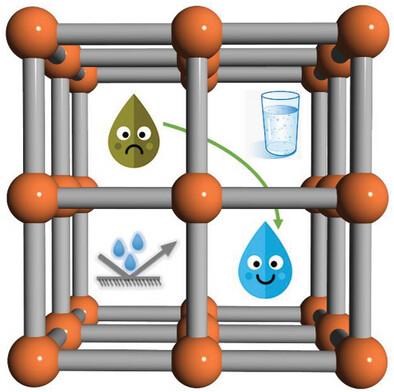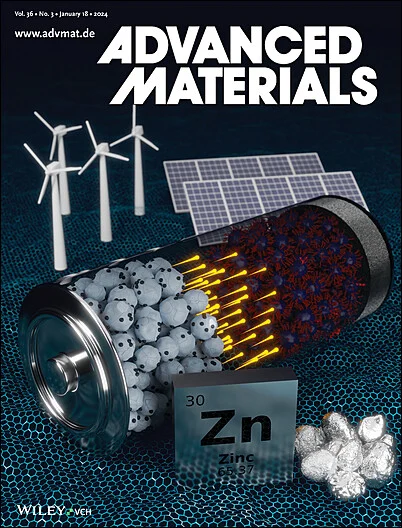通过优化 UiO-66 MOF 界面痕量吸附去除水中的 PFAS
IF 27.4
1区 材料科学
Q1 CHEMISTRY, MULTIDISCIPLINARY
引用次数: 0
摘要
淡水污染物具有普遍性、生物累积性和毒性,对环境的威胁首屈一指。全氟烷基和多氟烷基物质(PFAS)就是这三者的典型代表,在新出现的污染物中,PFAS 的危害令人担忧。饮用水处理中使用的最先进的 PFAS 吸附剂(即活性炭和离子交换树脂)存在吸附容量低、竞争性吸附和/或吸附动力学缓慢等缺陷。为了克服这些缺点,具有定制孔径、表面和孔化学性质的金属有机框架(MOFs)是很有前途的替代品。得益于 MOFs 和聚合物-MOF 复合材料的组成模块化,我们在此报告了一系列具有水稳定性的羧酸锆 MOFs 及其低成本聚合物接枝复合材料,作为 C8-PFAS 吸附剂,它们具有基准动力学和 "十亿分之一 "的去除率。通过利用固体吸附剂的界面设计原理,在外在颗粒表面和内在分子构件之间产生协同作用,从而获得对 PFAS 吸附剂结构-功能关系的独特见解。本文章由计算机程序翻译,如有差异,请以英文原文为准。

Trace Adsorptive Removal of PFAS from Water by Optimizing the UiO-66 MOF Interface
The confluence of pervasiveness, bioaccumulation, and toxicity in freshwater contaminants presents an environmental threat second to none. Exemplifying this trifecta, per- and polyfluoroalkyl substances (PFAS) present an alarming hazard among the emerging contaminants. State-of-the-art PFAS adsorbents used in drinking water treatment, namely, activated carbons and ion-exchange resins, are handicapped by low adsorption capacity, competitive adsorption, and/or slow kinetics. To overcome these shortcomings, metal–organic frameworks (MOFs) with tailored pore size, surface, and pore chemistry are promising alternatives. Thanks to the compositional modularity of MOFs and polymer–MOF composites, herein we report on a series of water-stable zirconium carboxylate MOFs and their low-cost polymer-grafted composites as C8–PFAS adsorbents with benchmark kinetics and “parts per billion” removal efficiencies. Bespoke insights into the structure–function relationships of PFAS adsorbents are obtained by leveraging interfacial design principles on solid sorbents, creating a synergy between the extrinsic particle surfaces and intrinsic molecular building blocks.
求助全文
通过发布文献求助,成功后即可免费获取论文全文。
去求助
来源期刊

Advanced Materials
工程技术-材料科学:综合
CiteScore
43.00
自引率
4.10%
发文量
2182
审稿时长
2 months
期刊介绍:
Advanced Materials, one of the world's most prestigious journals and the foundation of the Advanced portfolio, is the home of choice for best-in-class materials science for more than 30 years. Following this fast-growing and interdisciplinary field, we are considering and publishing the most important discoveries on any and all materials from materials scientists, chemists, physicists, engineers as well as health and life scientists and bringing you the latest results and trends in modern materials-related research every week.
 求助内容:
求助内容: 应助结果提醒方式:
应助结果提醒方式:


